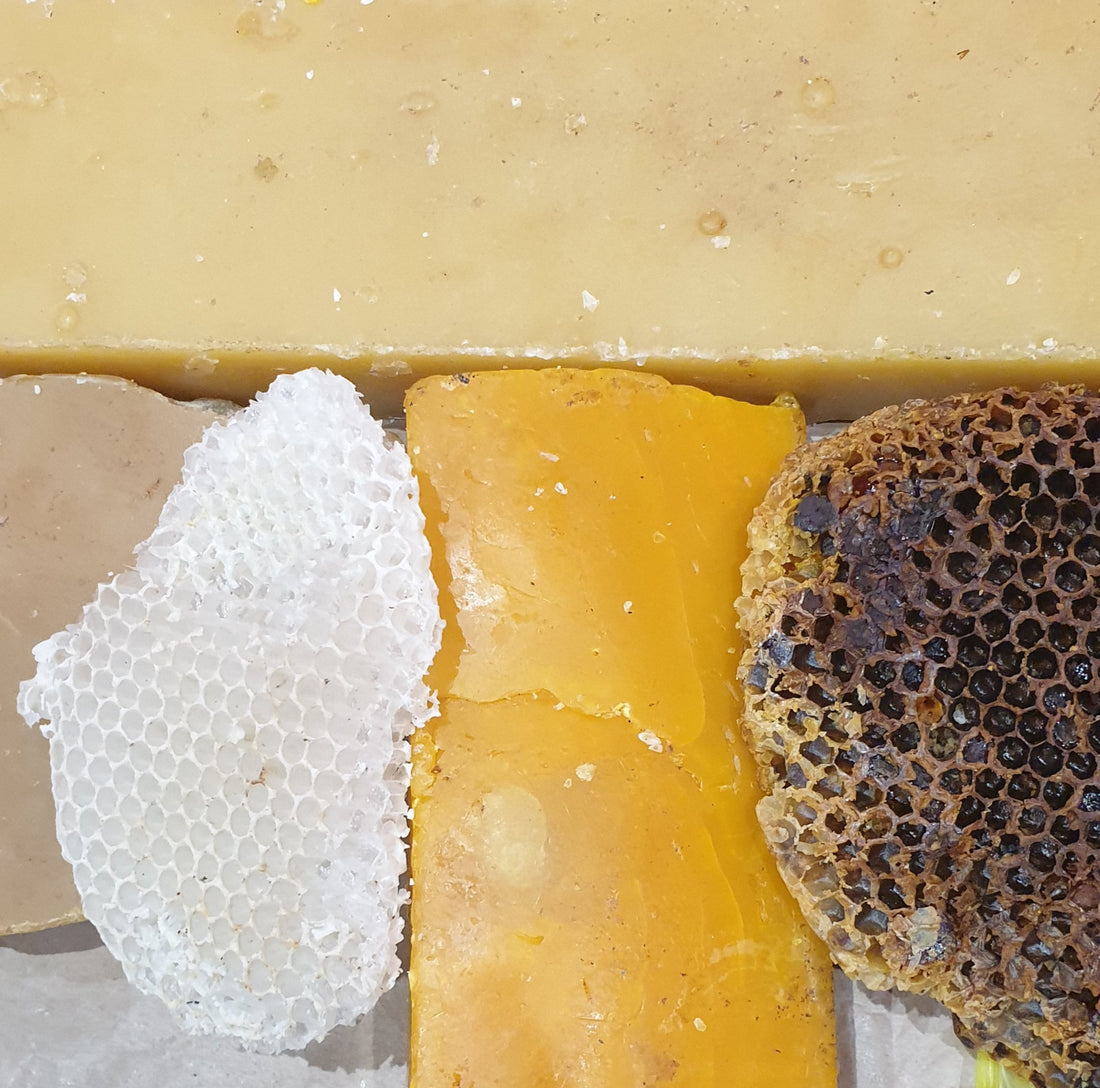My beeswax balms are sometimes a different colour, one of the realities of buying from a small farm based business adding value to natural products.
It is incredible how white the fresh wax comb is when the bees first produce it and how dark it can become after they have stored nectar, pollen, propolis and most importantly hatched brood.
Every bee that emerges from the brood comb leaves behind the cocoon/exoskeleton. Brood comb gets darker and darker and cells get smaller and smaller.
Worker bees secrete wax from 8 glands on their abdomen, each wax scale is about three millimetres across and 0.1 mm thick about 1100 are needed to make a gram of wax.
The worker bees metabolise sugars from honey into beeswax. The amount of honey used by bees to produce wax has not been accurately determined, but according to a 1946 experiment, 6-8 kg of honey is need to produce one kilogram of wax.
We use a solar wax melter for the first stage in processing the comb and capping which we collect while managing the hives and extracting honey.
Our West Australian summers are hot and sometimes the solar melter has become too hot. Ideally the wax will be a pale yellow like the block at the top, but if it goes above 85°C it will discolour. After it melts it filters through a couple of cloths before setting into a block.

I clarify the wax again in water in a slow cooker to get rid of any honey. I put it into a muslin bag to collect any propolis or pollen.

I then re-melt these clean ovals and pour through another filter bag into smaller moulds so it is ready to use in all my balm recipes.
Ideally I keep it around 65 °C to 70°C so it doesn't scorch and change colour.... but I do forget occaisionally so I am looking at a proper wax melter.
I already have one, but I commandeered it for making liquid soap.

